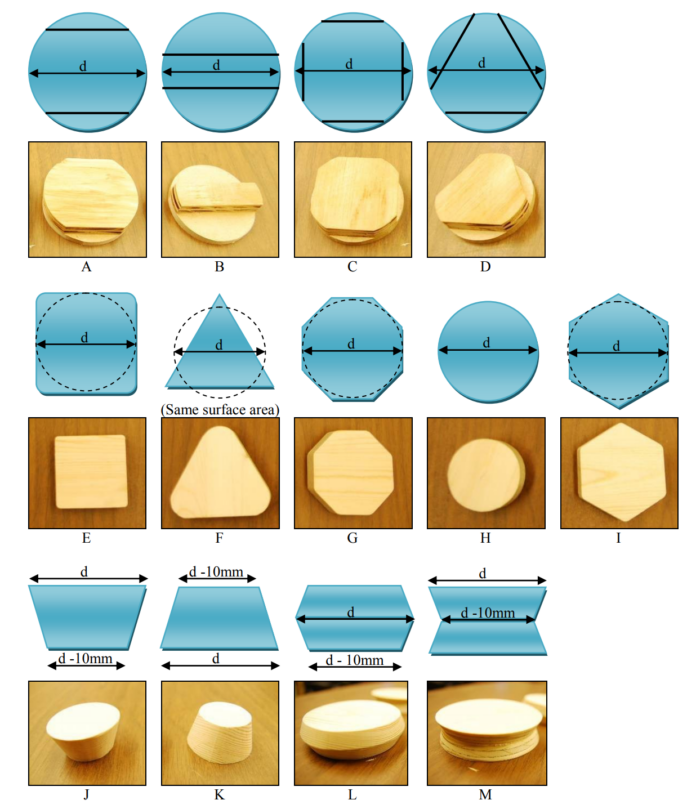Older people often experience difficulties in performing the activities of daily living. There are two knowledge gaps associated with the problem. First, there is a research void in understanding the relationship between product interface design characteristics and hand dysfunction levels in older populations. Taking jar lids as an example of the product interface as the focus of this study, associations between jar lid design characteristics and the user experiences of older people with hand disability were explored. When investigating jar lid design characteristics, to the best of our knowledge, no prior published research specifically studied older people who were known to have difficulties opening or closing jar lids or who reported experiencing hand pain around the time of their study participation.
Second, methods and tools for making it easier for industrial designers to produce inclusive designs during product design processes are still insufficient. Although there are many Human Factors design assist tools available for designers to use, it has been found that designers seldom consult these established resources. It was recognized that a gap still exists between Human Factors information explorers (e.g. engineering researchers) and information users (e.g. designers).
Therefore, the aim of the study was to address knowledge limitations in two important areas by applying Ergonomics and product design research methodologies, in concert, to (1) discover what lid design features can improve the user experience of older people with hand impairment, and (2) discover what concepts of Human Factors design assist tools can satisfy the practical needs of industrial designers when solving design problems, such as jar lids that facilitate opening and closing by a wide range of potential users. Accordingly, there were three phases of research activities included: Phase 1 (“Exploration”) – Exploring different levels of user experiences when interacting with product interfaces; Phase 2 (“Evaluation”) – Evaluating product interface design characteristics through controlled experimental tests; and Phase 3 (“Communication”) – Investigating industrial designers’ needs when using an electronic Human Factors design assist tool during the product design process. For Phase 1 and 2, older females (65 years of age or older) with declined hand function, and for Phase 3, industrial designers who had at least one year of work experience in industry were recruited into the study.
According to the lid design evaluation results, lid height was the strongest factor associated with the levels of perceived effort when turning a lid. For both medium lids (e.g. 42 mm in diameter) and small lids (e.g. 28 mm in diameter), the design that was rated the lowest in perceived effort to turn was the one with a tall height and a hexagonal top shape.
As to the investigation of designer’s usage of Human Factors information during the design process, the result showed that most of designers used Human Factors information in the beginning (e.g. “Information Gathering”) and the end (e.g. “Evaluating and Refining Prototype”) of the design process. If compared with designers with less years of work experience, a higher percentage of designers with more than 20 years of experience would use Human Factors information to support their ideation. In addition, they tended to start their concept evaluations earlier in the design process.
The study identified barriers to use of Human Factors information by designers. In addition, it demonstrated how participatory design can be applied to learn about needs of designers and features for a design assist tool that designers would find useful, usable and desirable.
Overview:
This dissertation researched similar questions in the realm of hand function and the need for tools for both designers and users to help solve the problems that arise due to hand disabilities. An interesting fact listed within the dissertation states, “Most of the older individuals with hand use limitations experience increased difficulties in performing everyday tasks such as opening a new jar (92%), carrying a full pot (80%), fastening jewelry (78%), turning faucets on or off (76%), and doing up buttons (72%) when interacting with products in their living environments (Bellamy et al., 2002a).” This not only validates the need for solutions in this area, but also provides even more resources for exploration.




